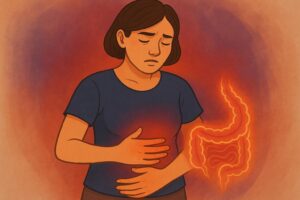Ulcerative colitis is a chronic autoimmune disease that causes inflammation and sores (ulcers) in the lining of the large intestine (colon) and rectum. The body’s immune system mistakenly attacks healthy tissue in the colon, leading to symptoms like diarrhea, abdominal pain, and urgency to use the bathroom.
UC typically comes in flare-ups (when symptoms worsen) and remission periods (when symptoms improve or disappear). It can range from mild to severe and often impacts daily life.

